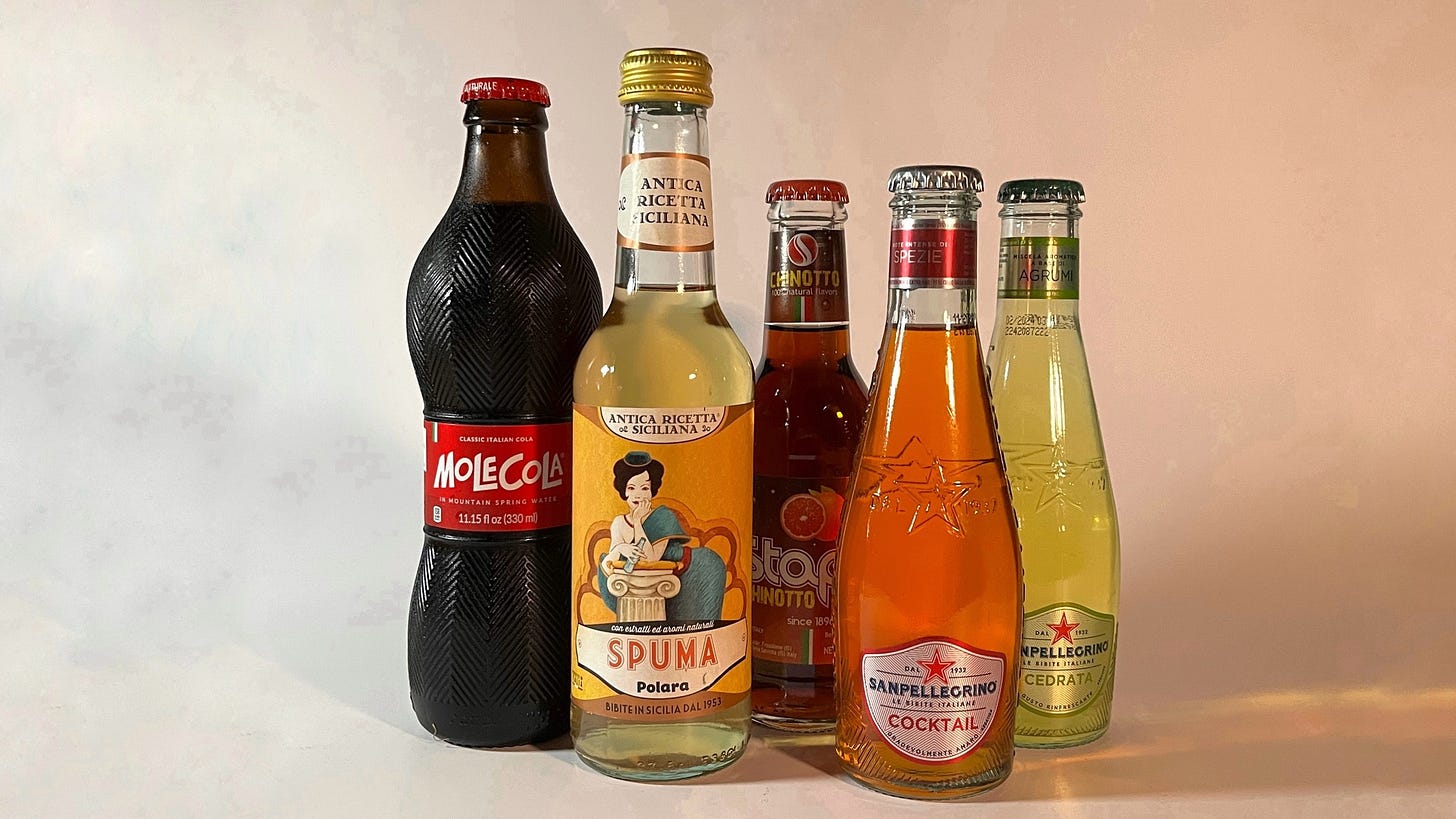A confession: I drank a 1.5-liter bottle of Fanta this past weekend.
This would be remarkable enough even without further details, since until recently I was a self-professed soda hater. I don’t order it aboard airplanes; I didn’t even venture down the soda aisle of the supermarket a few years ago.
But allow me to elaborate: The Fanta’s flavor was elderflower-lemon, and the bottle originated in Serbia, where the flavor emulates a traditional drink called socata.
How did this bottle, with its Serbian script and lack of FDA labeling, come to be offered in a supermarket in an unfashionable part of south Brooklyn? That’s not for me to know.
But it had plenty of company there, mostly from Italy: chinottos of various brands, and Sicilian lemon and orange sodas, and multitudes of San Pellegrinos in flavors not officially available here.
And that’s all at just one supermarket. There are others I frequent as well, each with its own specific international offerings.
During early-pandemic times, out of a desperation for novelty, I started fully exploring the aisles of supermarkets as I never had before—the one nearest me, and also various ones a couple of neighborhoods over that cater to the various populations of immigrants who’ve settled nearby. As it turned out, the items that fascinated me the most were the sodas.
At my local supermarket, despite there being no significant Caribbean population nearby of which I’m aware, there’s half an aisle of sodas of Caribbean and Mexican origin: kola sodas, both red and golden; a wide selection of ginger beers from Jamaica and Trinidad, too many brands to count; nearly the full lineup of Jarritos, in guava and tamarind and at least a half-dozen more. There are sodas in flavors of coconut and raspberry and apple and pineapple-ginger and merengue, all begging to be tried.
A couple of neighborhoods away, the established Italian-American population is the ostensible target for one store’s array of Italian sodas presumably black-marketed over (since most lack the FDA-mandated labels): the aforementioned numerous chinottos, and San Pellegrinos in flavors of Cedrata (cedarfruit; I have not figured out how to describe it) and Aranciata Amara (or bitter orange—tasting, remarkably, exactly like the juice of the inedible fruit) and, my favorite, “Cocktail,” which tastes like a non-alcoholic Aperol spritz, except better. There’s a soda in a flavor called “Spuma” (or “foam”), an ineffable combination of, its website claims, rhubarb and elderflower and clove, and Molecola, a better-than-most cola with the wackiest Instagram account I’ve ever stumbled upon.
Multiple stores in that same neighborhood, catering to an influx of immigrants from the former Soviet republics, offer sodas in tarragon and pear and mulberry flavors (to name but a few) from various brands, ever-changing. These, too, often lack FDA labels—or, to my great amusement, occasionally have labels with conflicting information pasted atop one another. (Does this artichoke beverage contain alcohol or not? Only one way to find out!)
The local J Mart (not a typo; it clearly took inspiration from the famed H Mart chain) has Asian drinks of all kinds, from the standard Calpico in melon and mango flavors to, a recent favorite find, a sparkling water flavored with white strawberry and coconut.
As for Fantas, I’ve found the classic orange variety in bottles originating from Mexico, Ukraine, and Italy. To my absolute non-surprise, the non-American ones are made with real sugar and real orange juice and without neon-orange artificial coloring.
So I suppose it’s time to stop professing that I hate soda and instead, snobbishly, say that I don’t drink American sodas, with their corn syrup and colored dyes and lack of relation to whichever fruit they’re pretending to emulate.
Perhaps that’s really the appeal here: Often, imported sodas aren’t just subjectively better but also objectively so. Very few include high-fructose corn syrup on the label, instead using cane sugar (a phrase I can now recognize in more languages than I can say “hello” in), and most include at least some small amount of natural, actual fruit juice. Even when the sodas are produced by the Coca-Cola company, other countries, as always, get what Americans don’t: Along with universal healthcare and several weeks of vacation time, they get sodas made with cane sugar and natural fruit flavoring and no artificial colorings.
But it’s not not the novelty of these flavors that I find appealing. It’s related, I’m sure, to why I love exploring supermarkets when I travel, browsing the aisles in Morocco and Burma and Japan. If food is culture, flavors are, too. The underused anthropology-major segment of my brain screams Tell me what you find delicious so I can know you better!
I encourage you to start exploring as well: Go hunting in a supermarket, close by or far-flung, for items that are new to you and that will slightly stretch your understanding of a food group you’d previously taken for granted. It doesn’t have to be sodas; it could be vegetables or candy bars or any number of things.
I’ll warn you, though: The ephemerality of these products, while being part of their appeal, can also deliver heartbreak. I risk a gamble every time I fall in love with something that’s not supposed to be for sale here. The offerings are ever-changing; what’s in the store today might not be there tomorrow, or ever again, and I know I shouldn’t get too attached. It affirms, in the very lowest-stakes way, what the past few years have taught many of us: the fleetingness of life and of enjoyment, and the importance of appreciating what you have in a given moment. How sweet and delicious it is.



